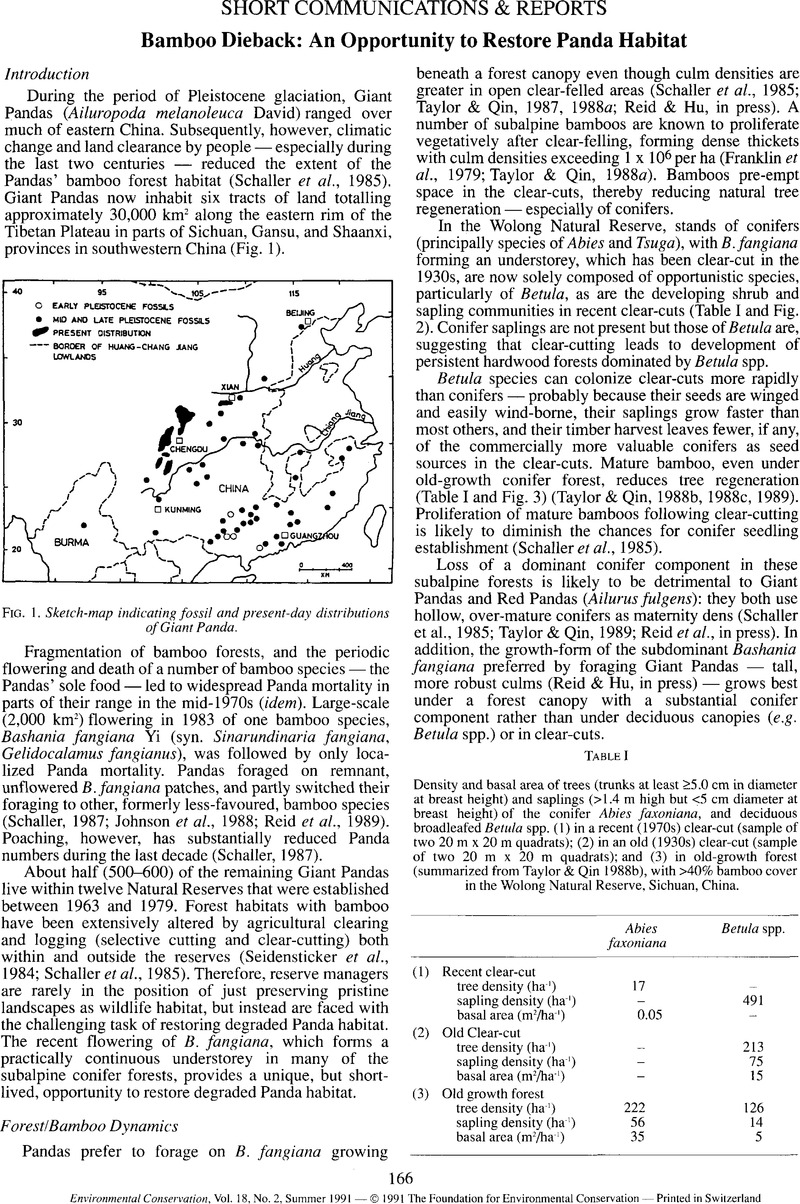Crossref Citations
This article has been cited by the following publications. This list is generated based on data provided by Crossref.
Taylor, Alan H.
and
Zisheng, Qin
1992.
Tree regeneration after bamboo die‐back in Chinese Abies‐Betula forests.
Journal of Vegetation Science,
Vol. 3,
Issue. 2,
p.
253.
Taylor, Alan H.
and
Zisheng, Qin
1993.
Ageing Bamboo Culms to Assess Bamboo Population Dynamics in Panda Habitat.
Environmental Conservation,
Vol. 20,
Issue. 1,
p.
76.
Taylor, Alan H.
and
Zisheng, Qin
1993.
Bamboo regeneration after flowering in the wolong giant panda reserve, China.
Biological Conservation,
Vol. 63,
Issue. 3,
p.
231.
Zhao-hua, Li
and
Denich, Manfred
2001.
An approach on the survivorship of giant panda in wild.
Journal of Forestry Research,
Vol. 12,
Issue. 1,
p.
59.
Li, Z.
and
Denich, M.
2004.
Is Shennongjia a Suitable Site for Reintroducing Giant Panda: An Appraisal on Food Supply.
The Environmentalist,
Vol. 24,
Issue. 3,
p.
165.
Bearer, Scott
Linderman, Marc
Huang, Jinyan
An, Li
He, Guangming
and
Liu, Jianguo
2008.
Effects of fuelwood collection and timber harvesting on giant panda habitat use.
Biological Conservation,
Vol. 141,
Issue. 2,
p.
385.
ZHOU, Shiqiang
HUANG, Jinyan
ZHANG, Yahui
LI, Desheng
HUANG, Yan
ZHOU, Xiaoping
WANG, Pengyan
and
ZHANG, Hemin
2010.
Diversity of Plant Community of Giant Panda’s Habitat in Wolong Nature Reserve: V. Species Diversity in Different Bamboo Forests*.
Chinese Journal of Appplied Environmental Biology,
Vol. 2009,
Issue. 2,
p.
180.
Li, Guochun
Song, Huadong
Altigani, Latifa A. A.
Zheng, Xueli
and
Bu, Shuhai
2017.
Changes of foraging patch selection and utilization by a giant panda after bamboo flowering.
Environmental Science and Pollution Research,
Vol. 24,
Issue. 19,
p.
16418.





